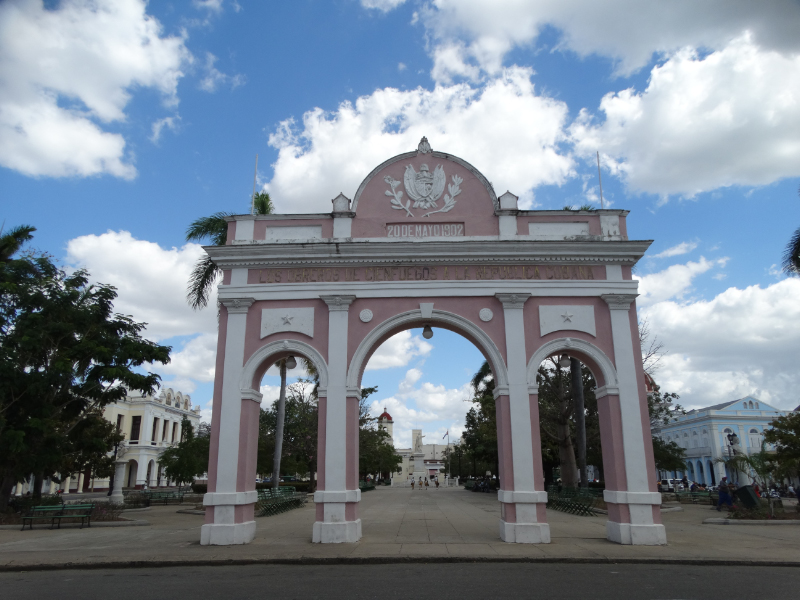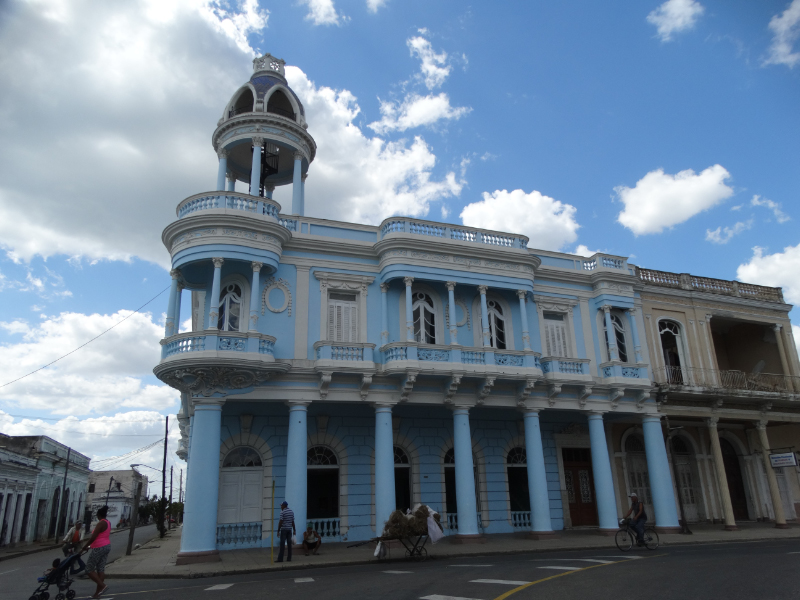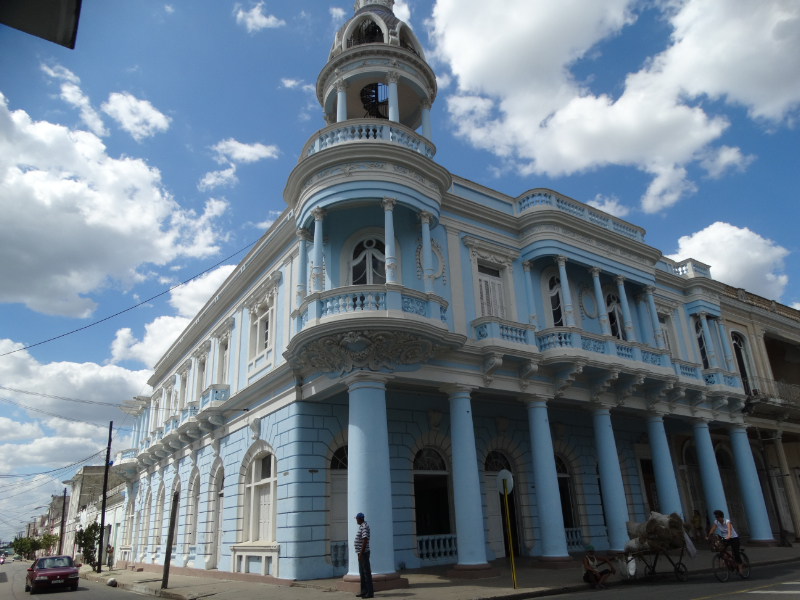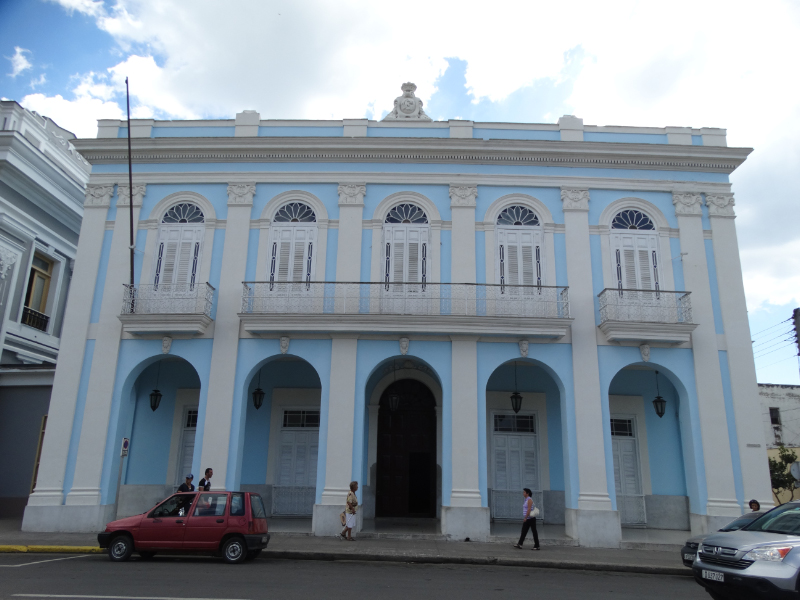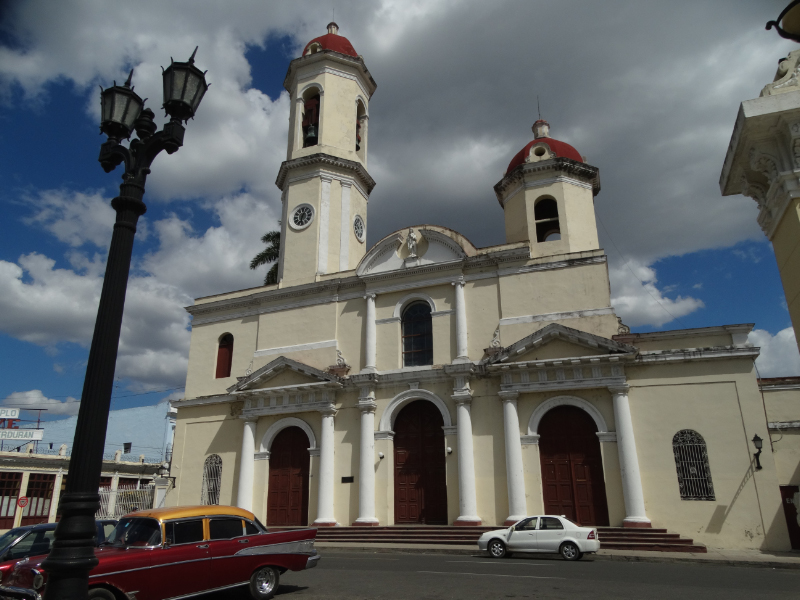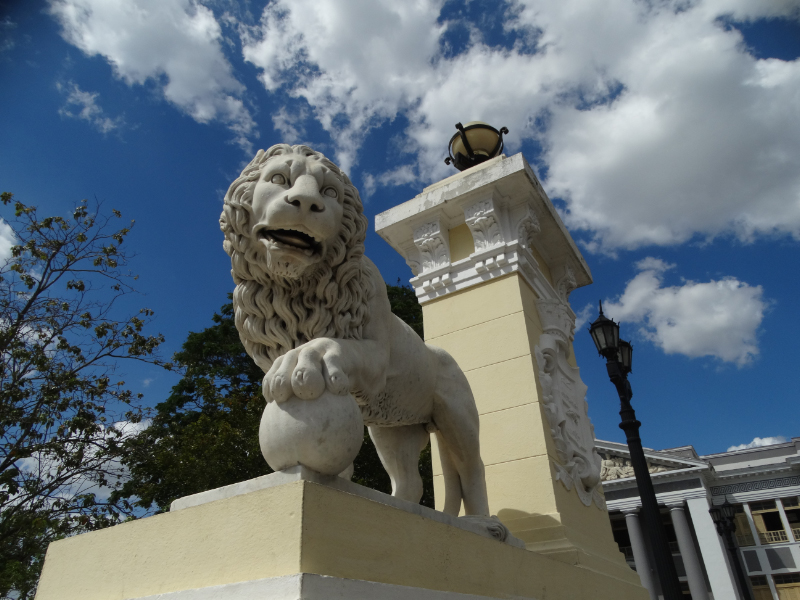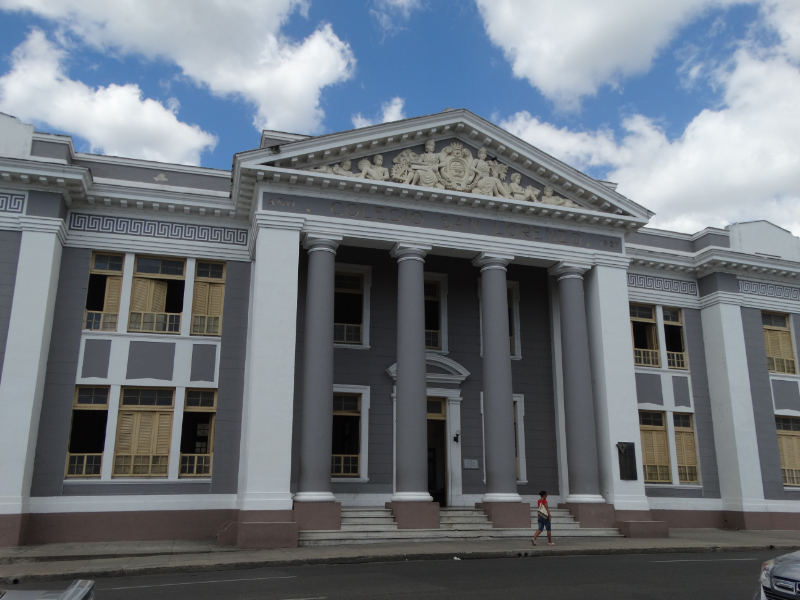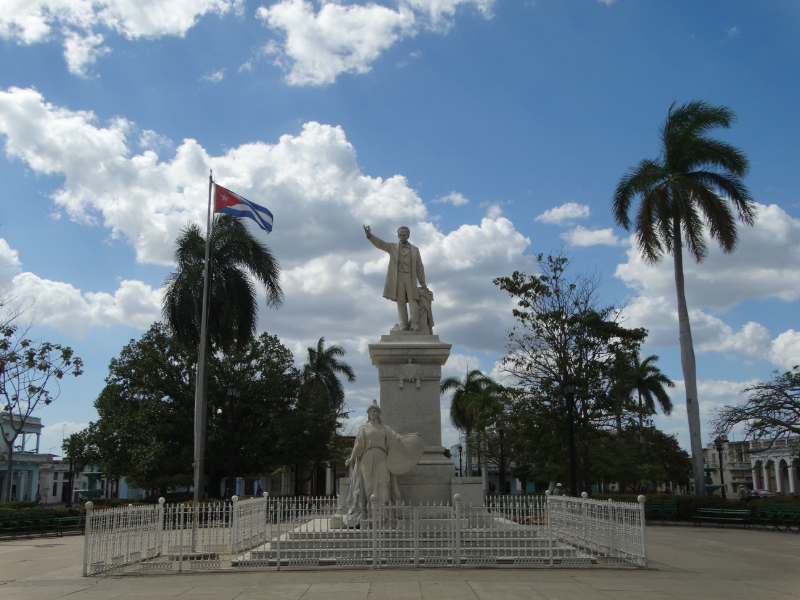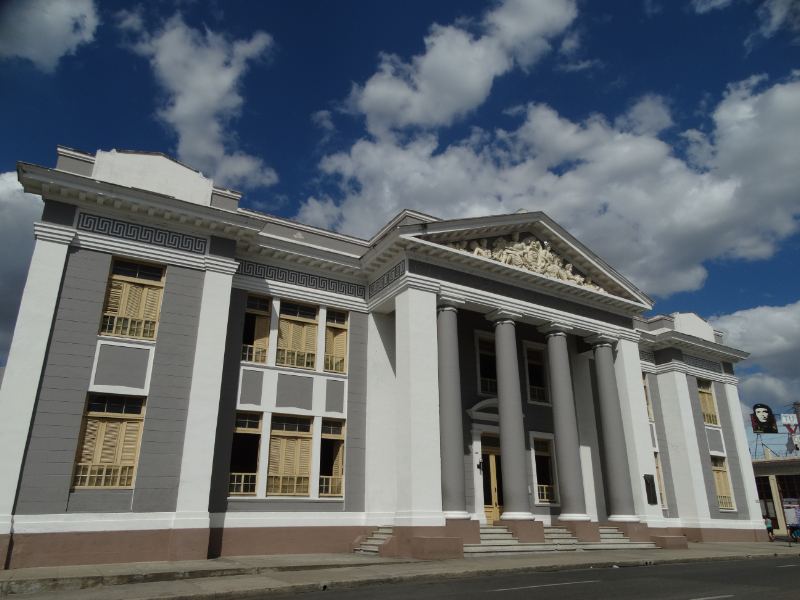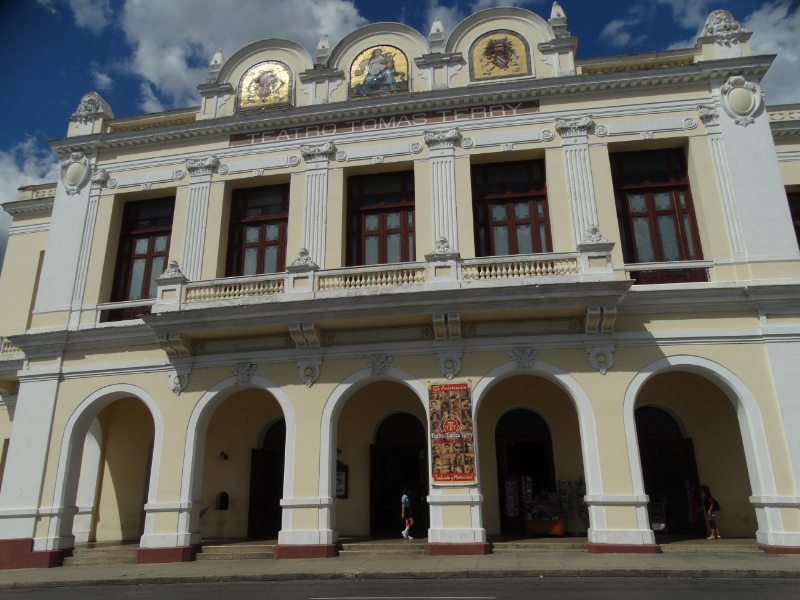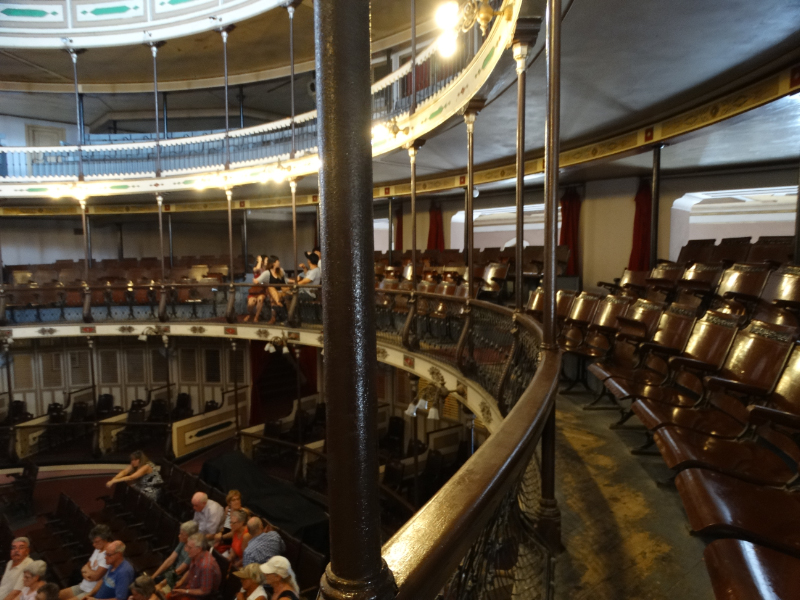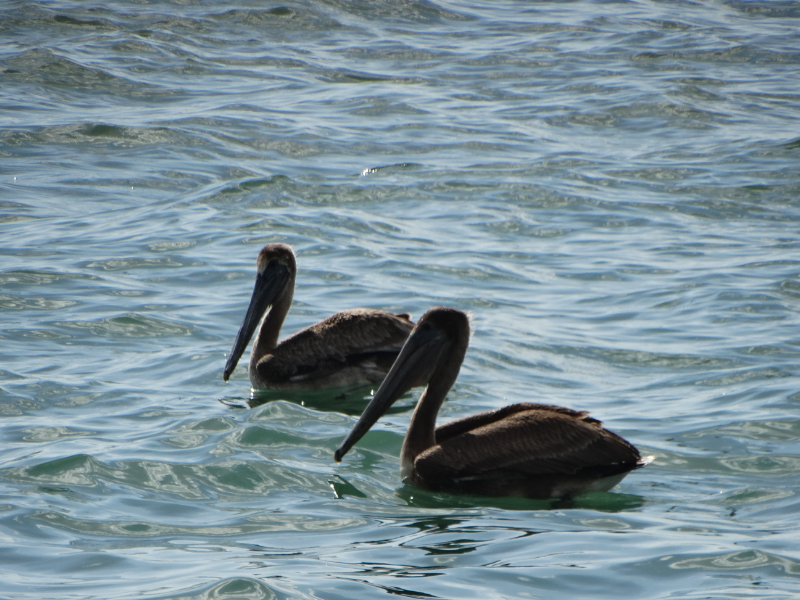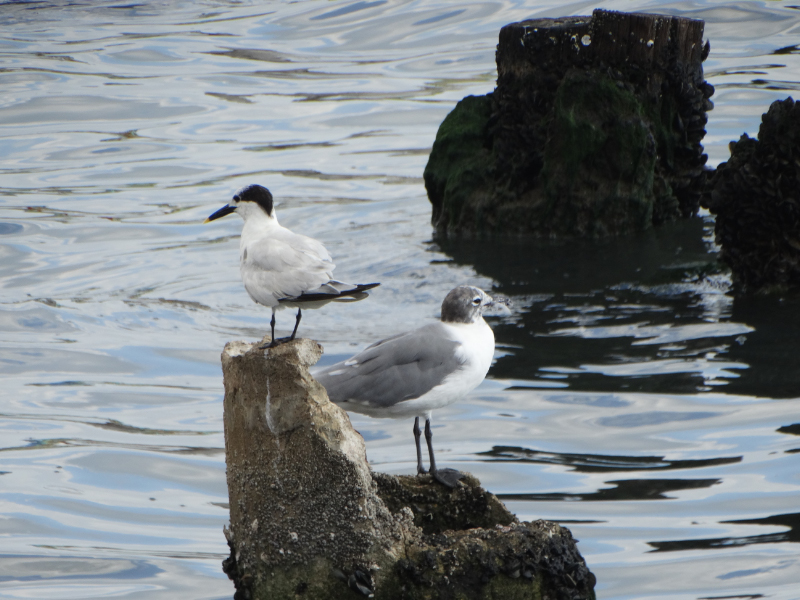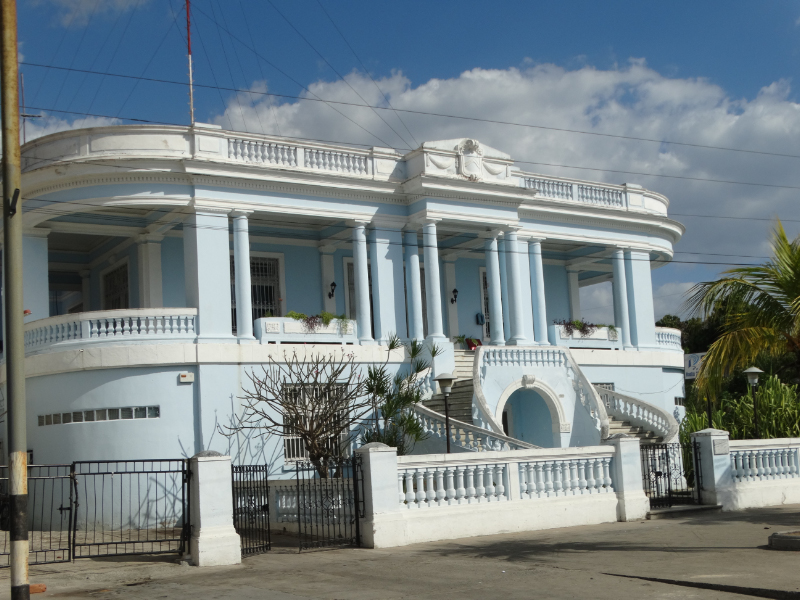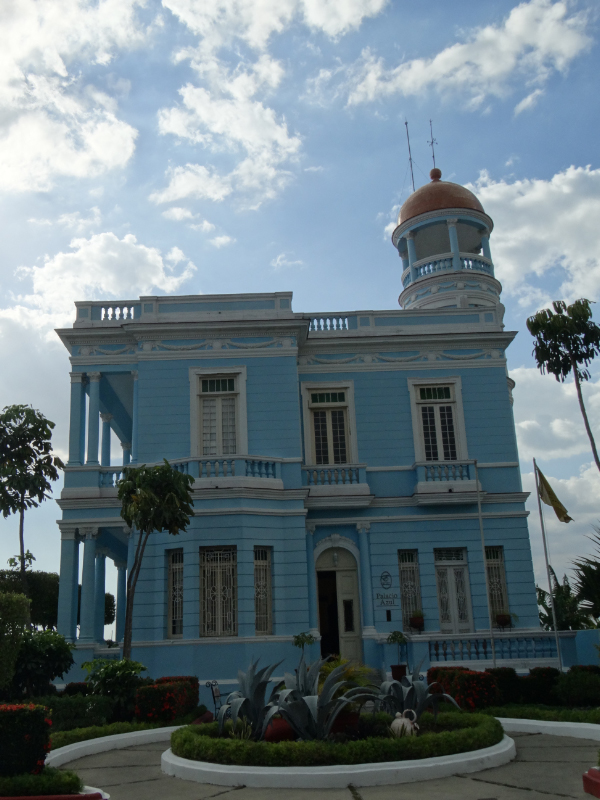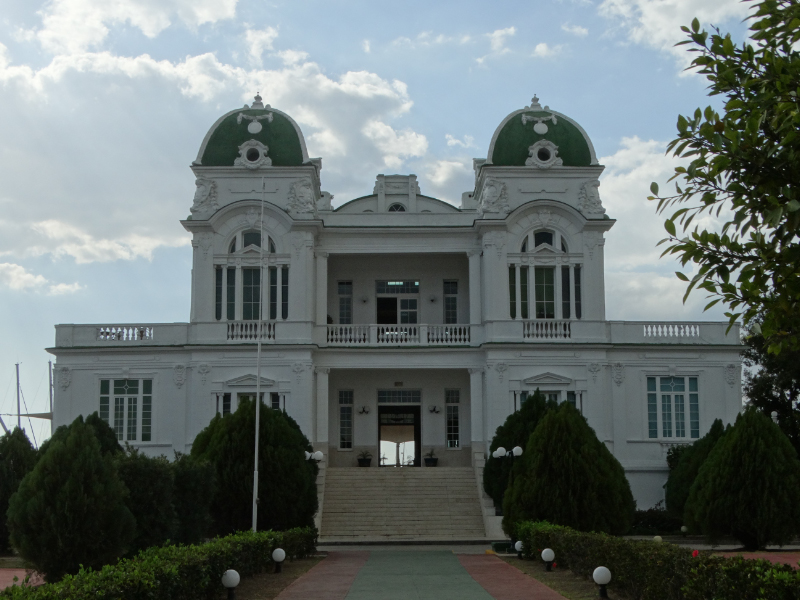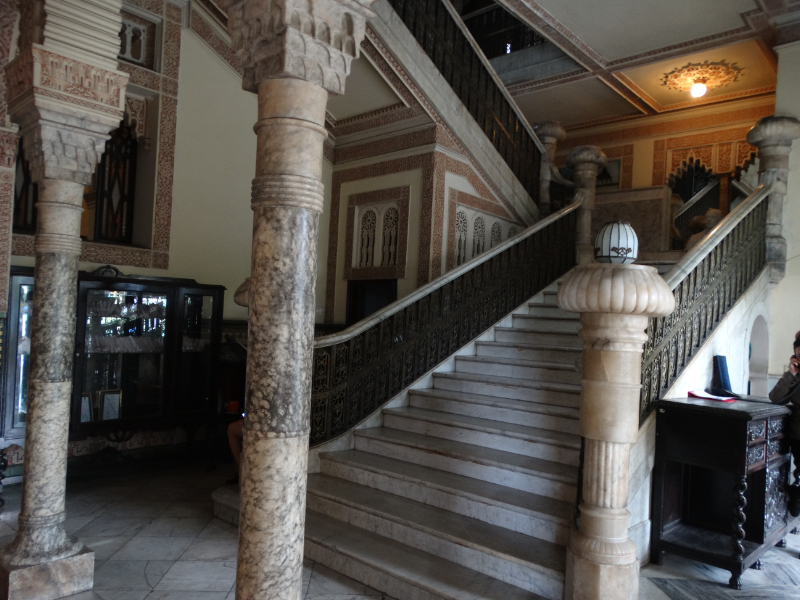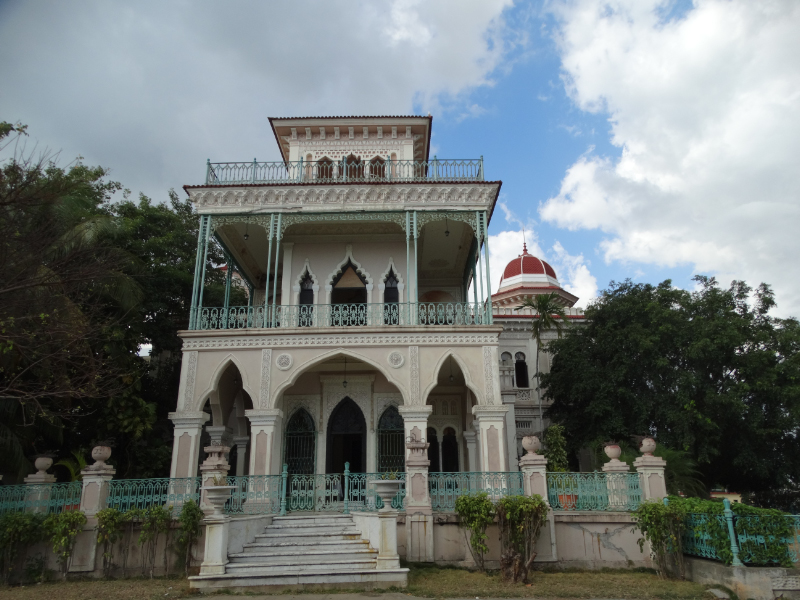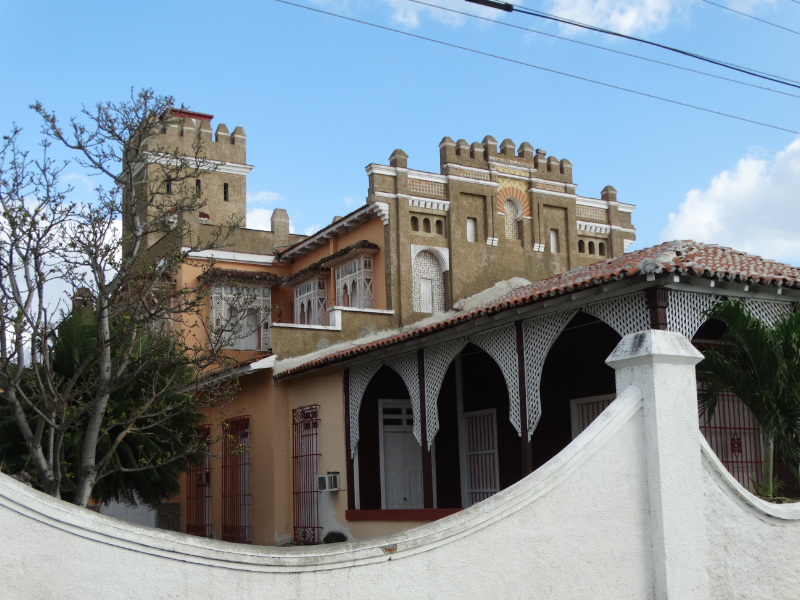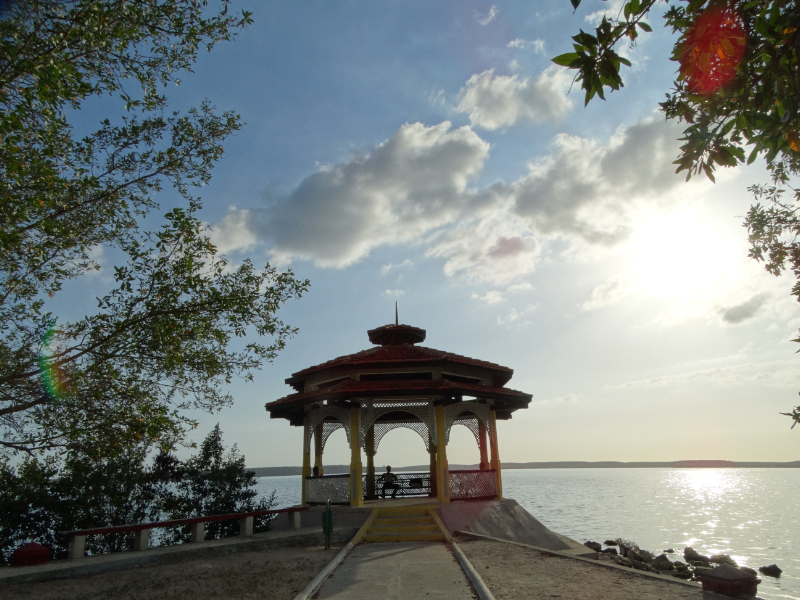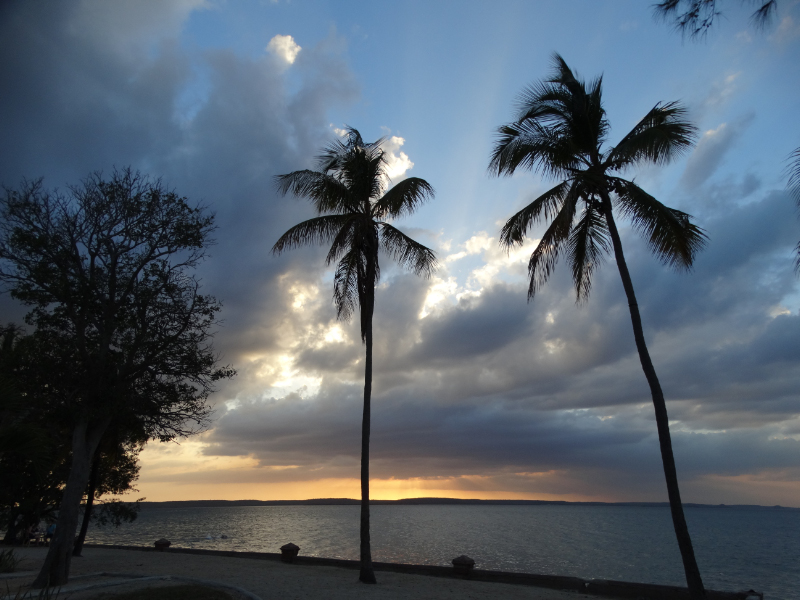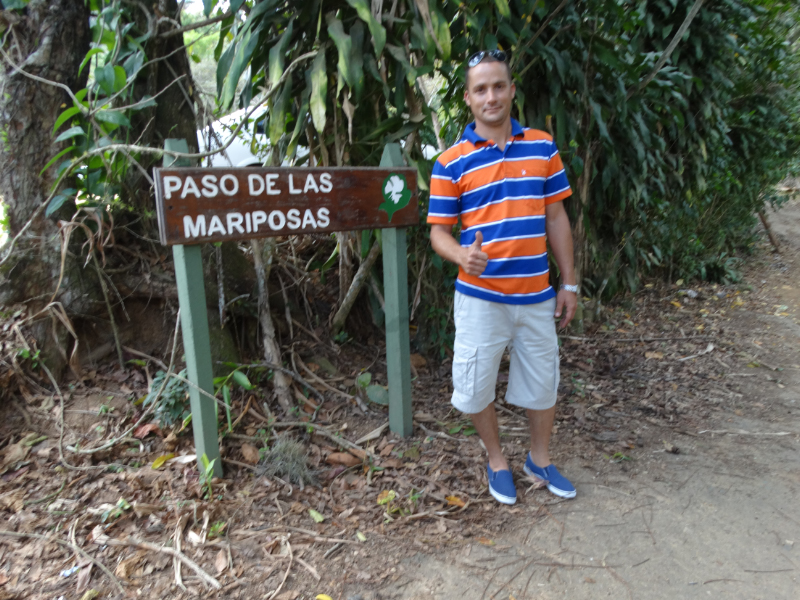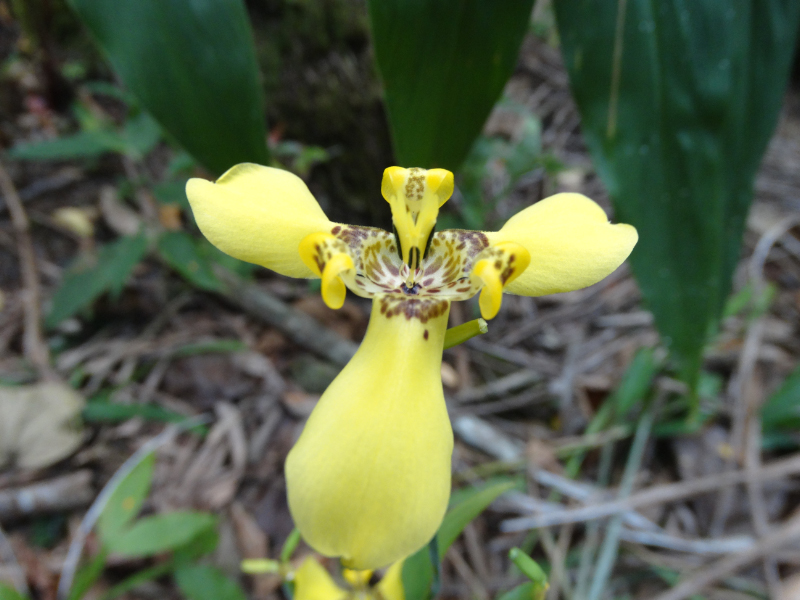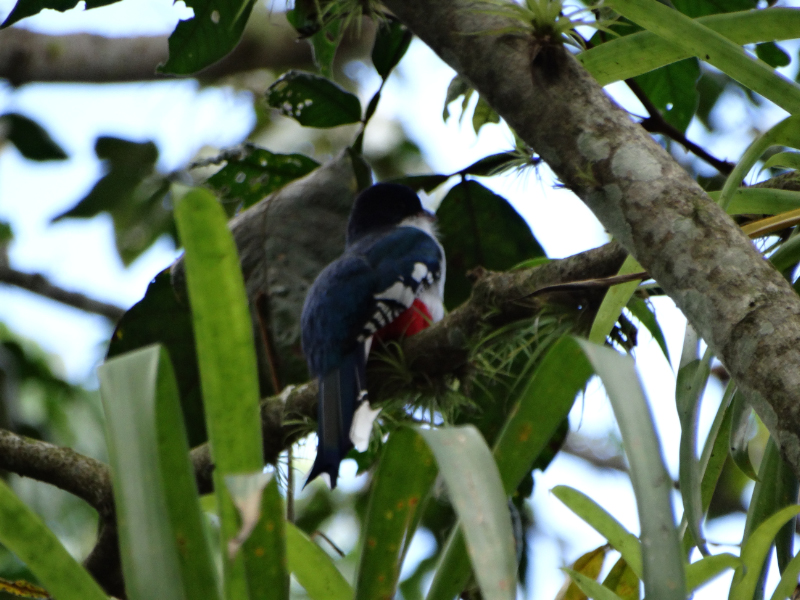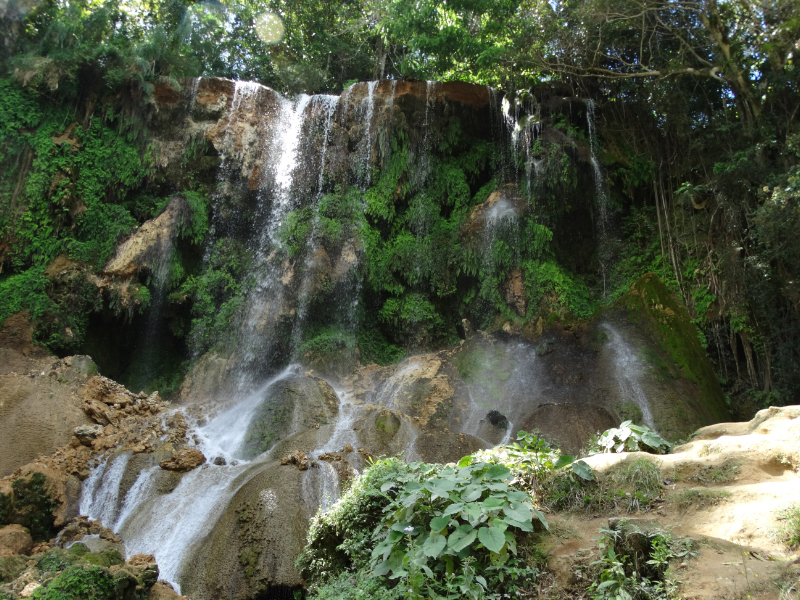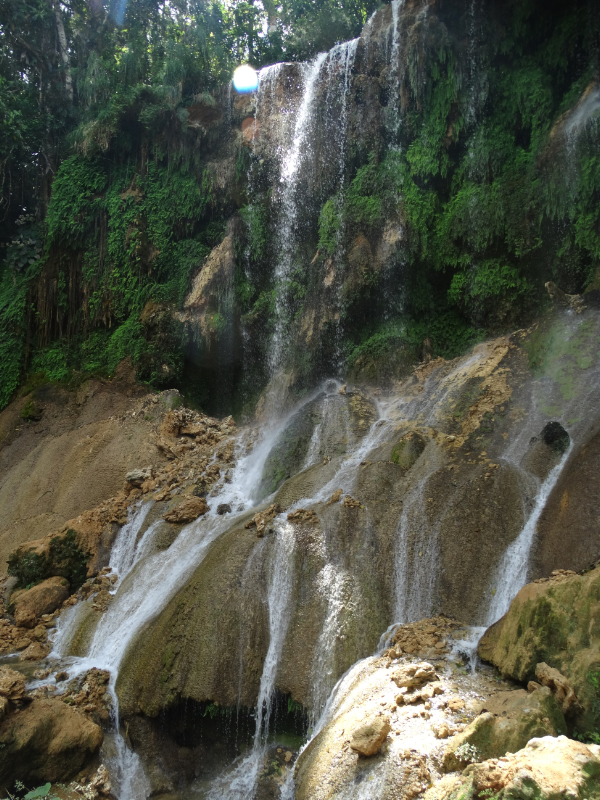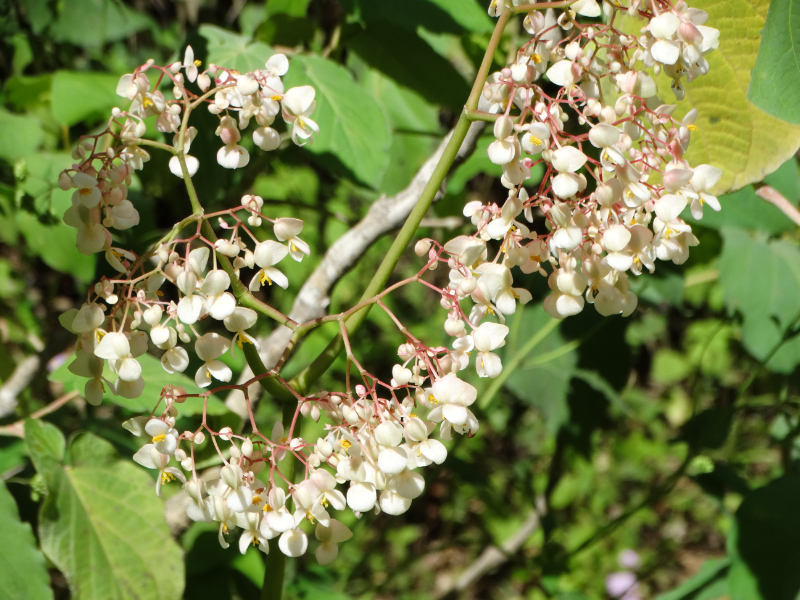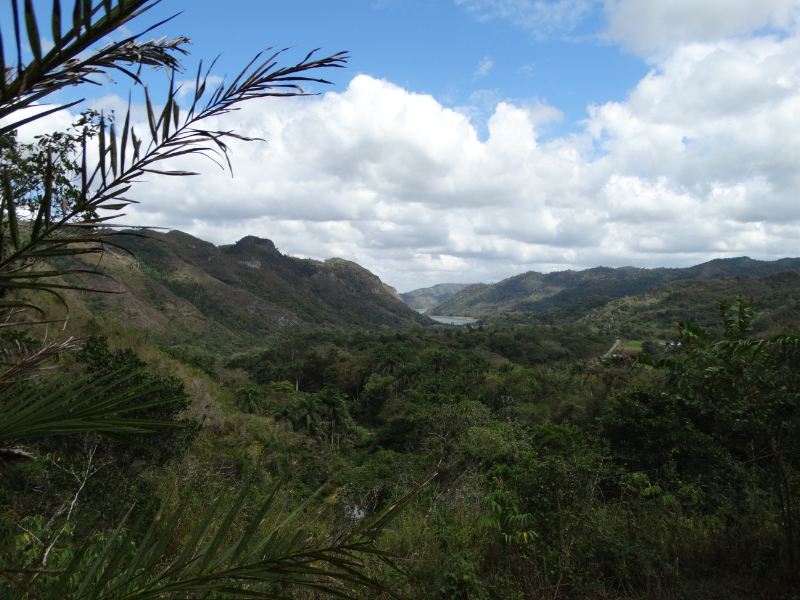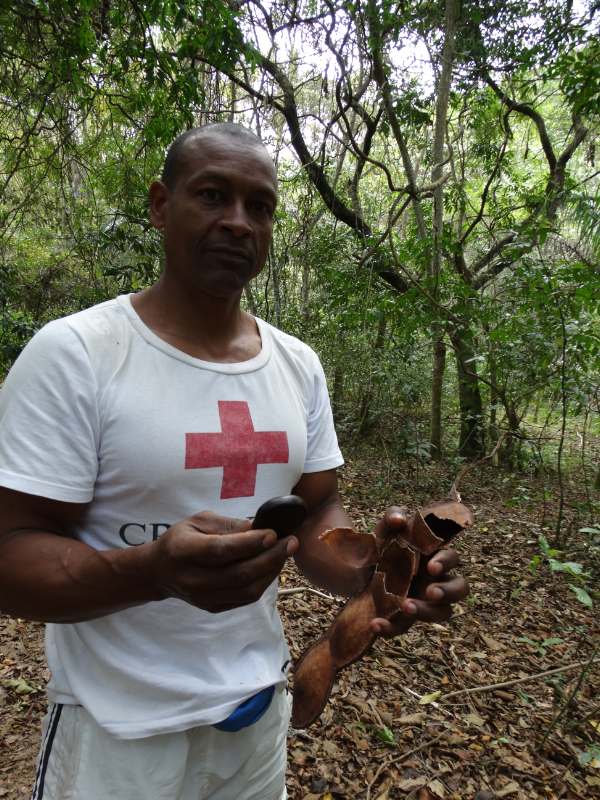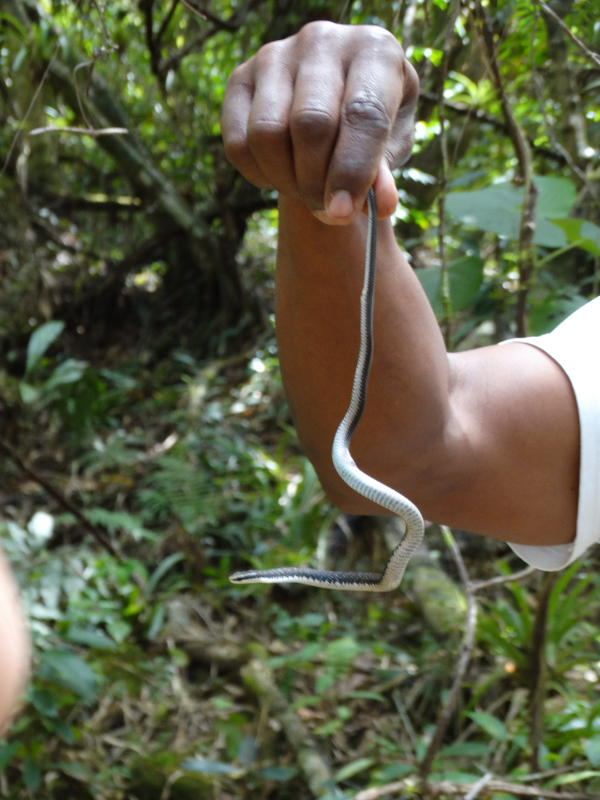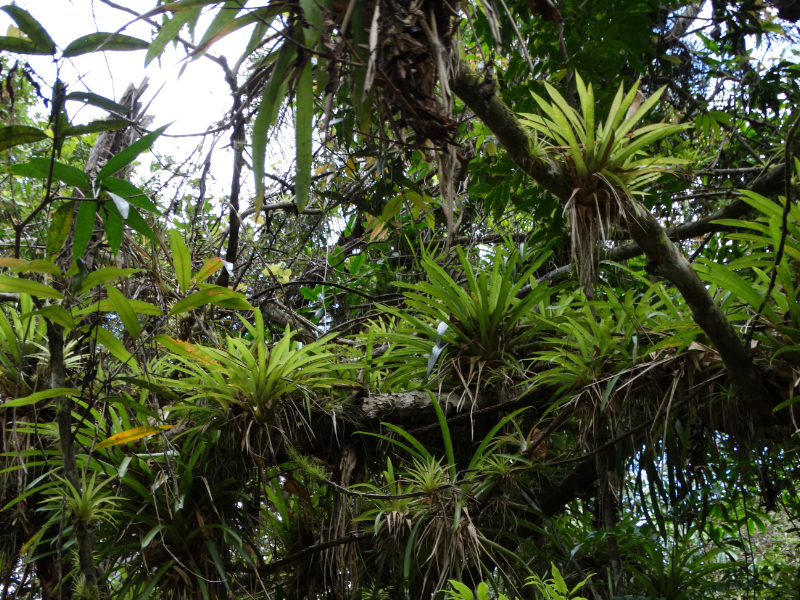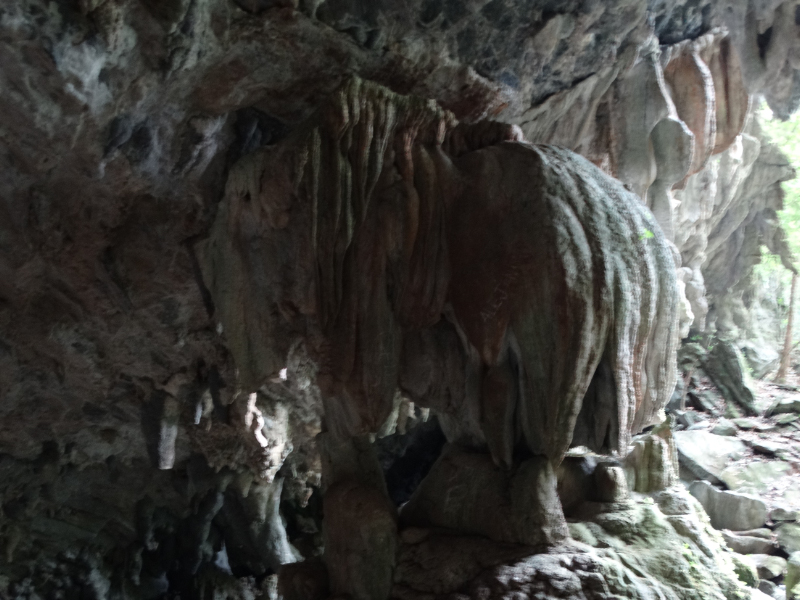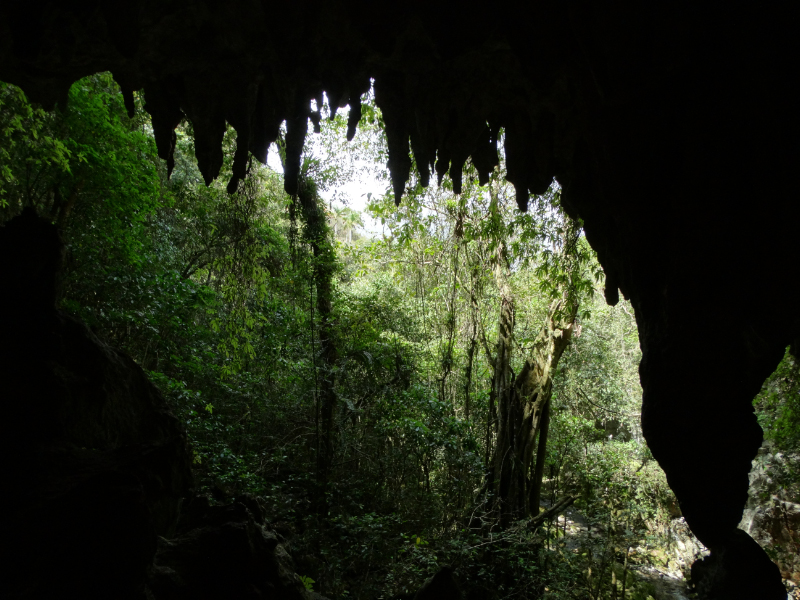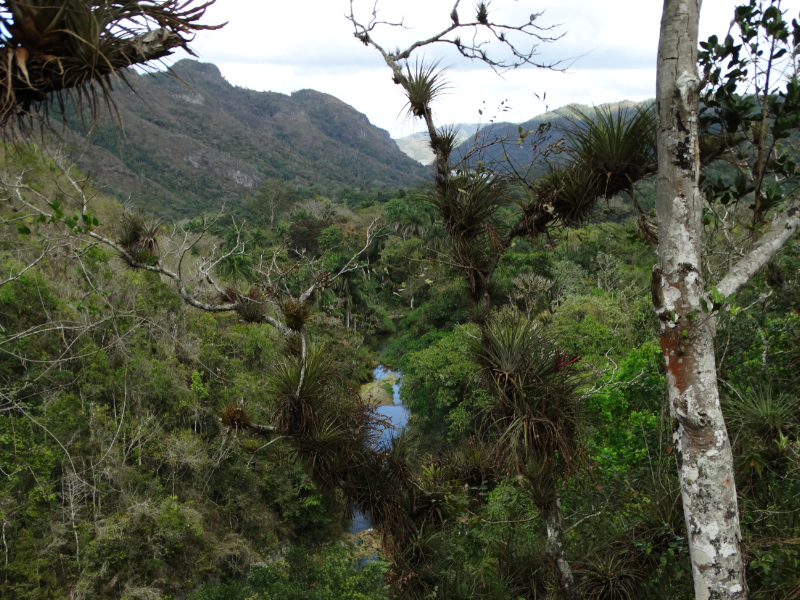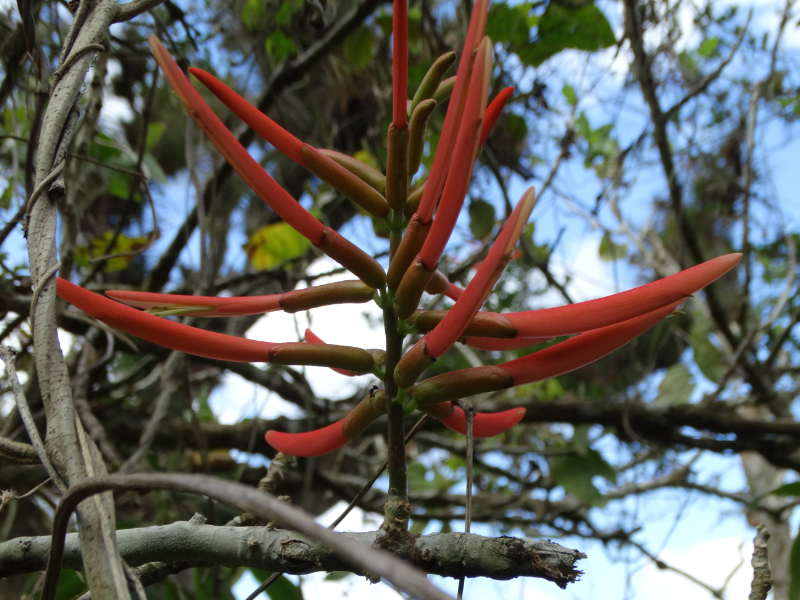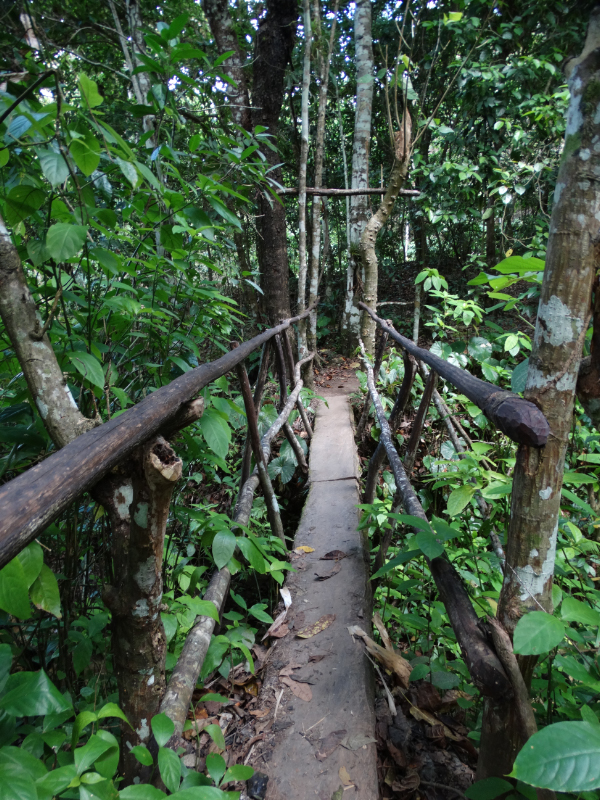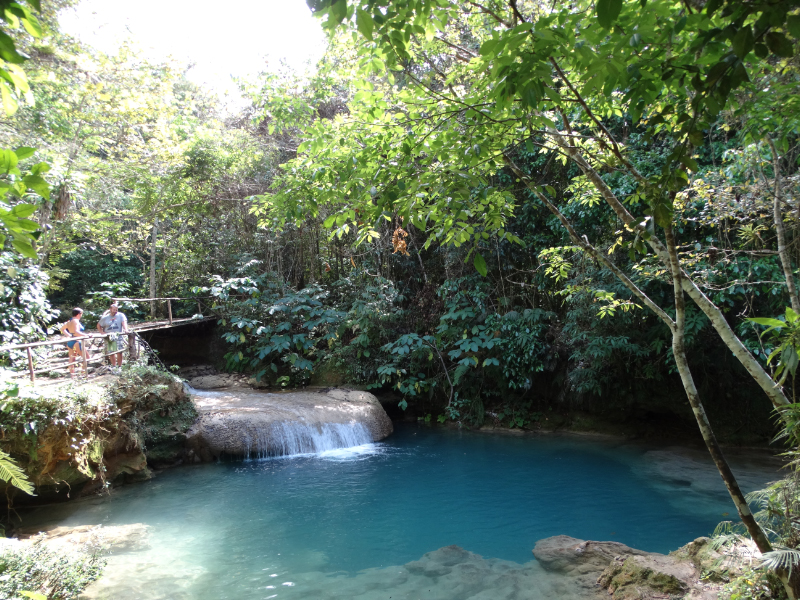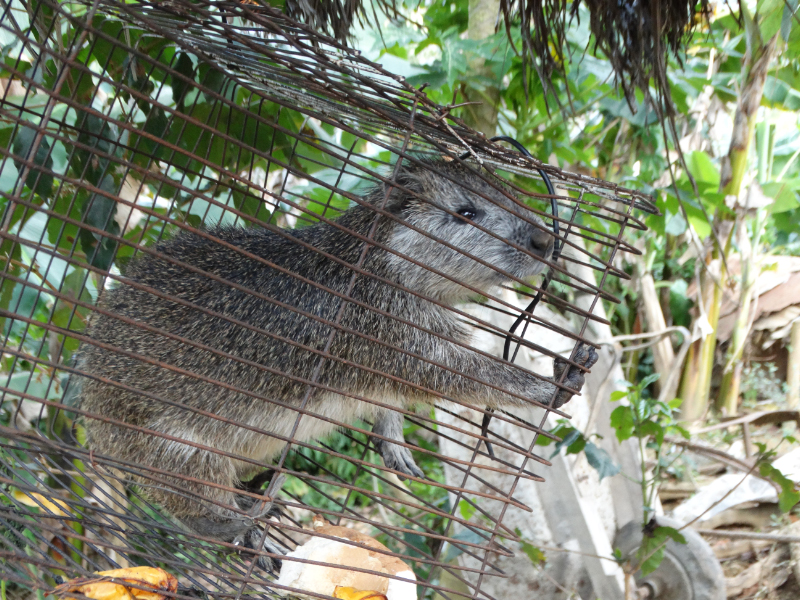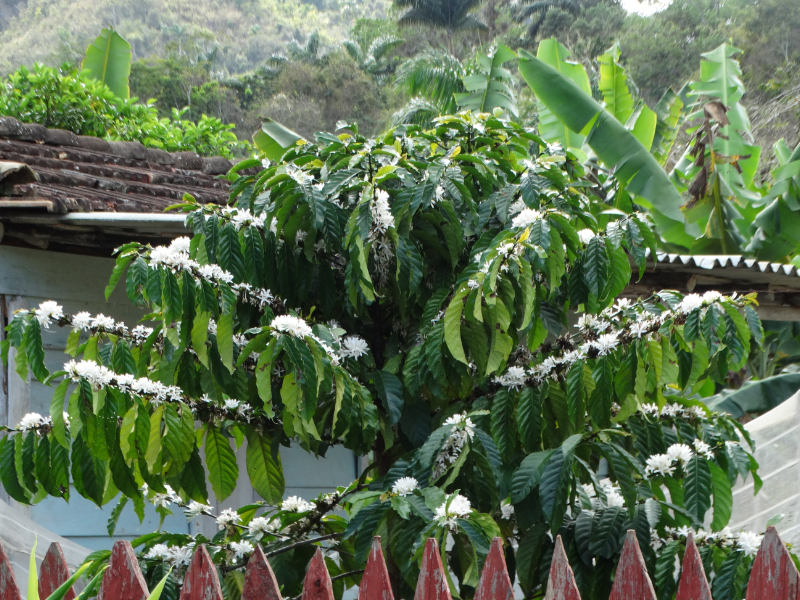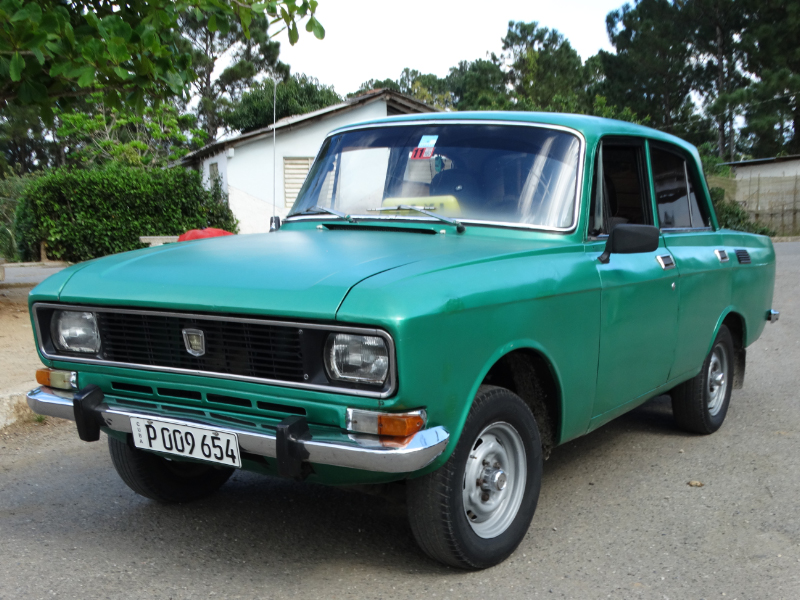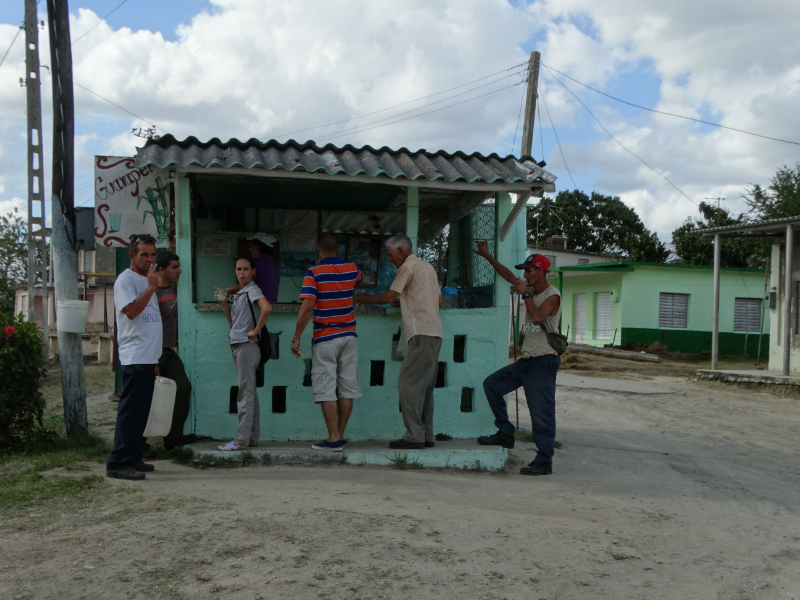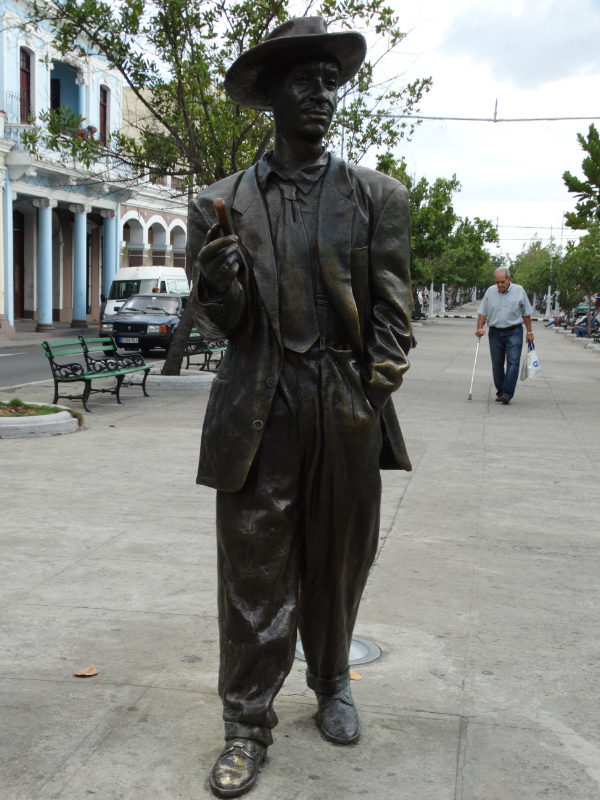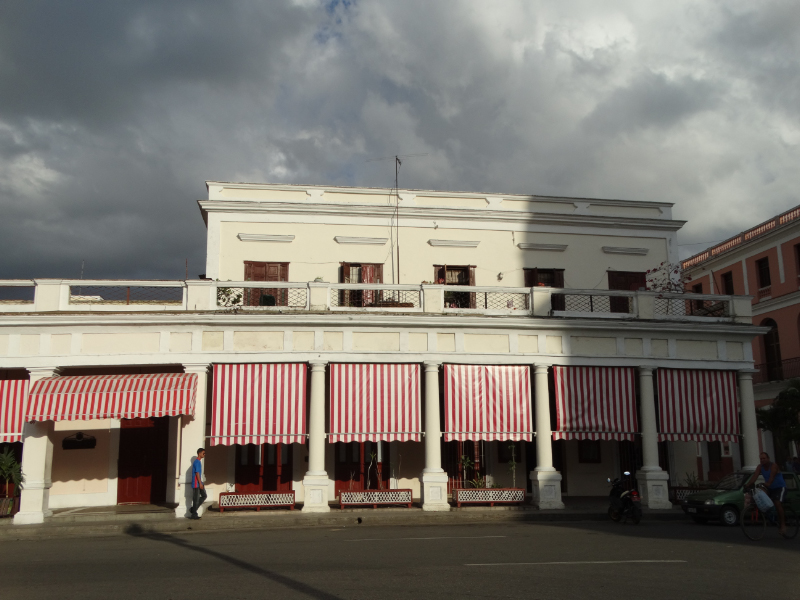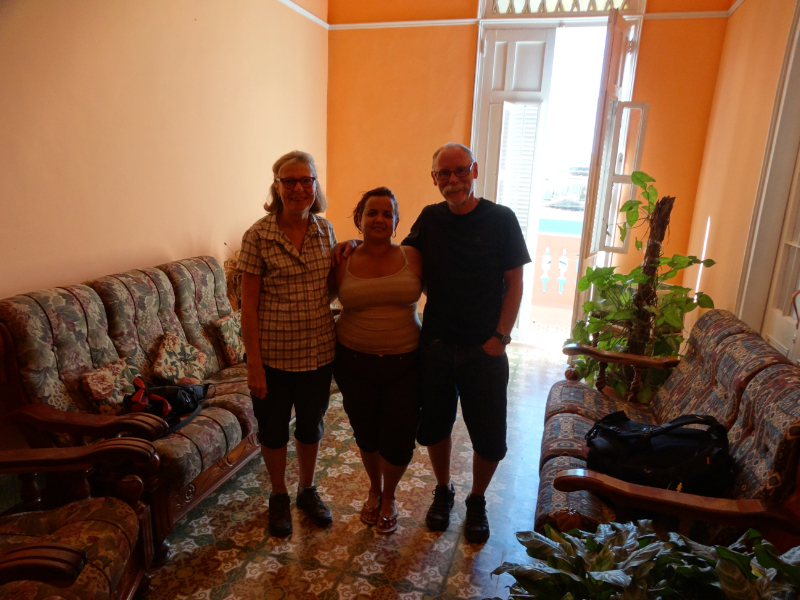Monday 2 to Wednesday 4 March
After a disappointingly boring drive from Havana we were at our Casa Particular by midday. Reviewing the map later I realised the driver had taken us on a new motorway rather than showing us some of the beaches on the tourist resort route. He certainly made a quick $80.
We spent the afternoon checking out the main sites of Cienfuegos. Firstly the Parque de Jose Marti. The local hero of the Cuban independence is remembered in the newly renovated park, which is surrounded by beautiful French Colonial buildings of many shapes and colours.
This is the only city in Cuba colonised by French rather than Spanish nationals. French influence came from families from Bordeaux as well as New Orleans and Philidelphia. As they became successful growing sugar cane they created a pretty city reminiscent of the river front of Bordeaux.
We checked out the harbour which was small and smelly. I hate to think how healthy the fish that came out of the water were. A number of birds were perched on posts, waiting their turn to scoop up some unlucky fish. Two Pelicans flew in and immediately went about filling their bellies.
We took the long peninsula Melacon to Punta Gorda walk. During the 19th century the sugar cane industry was thriving in this area and many rich cane farmers built ostentatious houses along the Melacon. The biggest and most ornate now have other lives as the Boutique Hotel Palacio Azul, the yacht club and marina and Palazio de Valle restaurant. Other houses have also been decorated and spruced up, mostly as Casa Particulares (family run small accommodation).
It was a long walk to the end of the point. Still no beach of value but a small restaurant and a cocktail bar were there. Seemed like a good opportunity to try a mohito. Turns out that the bar didn’t sell beer, that had to be sourced from a separate establishment.
This wasn’t the first time we found inconsistencies in beverage services. One restaurant in Havana served red wine but not white. A cafe here in Cienfuegos served coffee, beer and rum, but no fruit juices.
By now we had nearly exhausted the sights of the city, so the following day we hired Rafael and his 33 year old Moskvich/Lada hybrid car to drive us to see the waterfall at El Nicho, a 50km excursion into the local Sierra (serrated mountains). The hybrid car with Moskvich engine and gear box and Lada body was given a thorough workout in the rolling hills descending from El Nicho. The wolf whistle horn on the other hand was exercised every time we passed a curvy Cuban young chicita
Life is simple in Cuba. There aren’t many cars on the road and most of them offer taxi services. I suppose “have car, will drive”. Other forms of transport include a few buses, mostly looking very ancient, horse and cart, tricycle that takes two passengers behind the rider, the old American limousines and the more recent but equally rattly Ladas & Moskvichs.
When USA introduced sanctions the Cuban’s passion for the big American limo could no longer be fulfilled, so the Russian’s imported their cars – bare bones, runs on 4 wheels and most parts can be repaired or replaced. We saw a lot of these cars in Central Europe, held together with chewing gum and fencing wire.
The park entrance fee was $8 each, expensive after Cuba. Rafael spent a lot of time pointing out the native Cuban bird Tocororo, in its symbolic red, white and blue colouring.
A fast running stream fed a brilliant blue water hole with enough clear water to consider diving from the rocky side.
We continued along side the stream until we reached a pretty waterfall. Rafael assured us that this is the quiet time for the waterfall, as the season is dry, however in June, July and August the spray makes it dangerously slippery to get close to it, with so much water gushing over it.
Rafael left us to climb to the top of the waterfall to see the panorama. A local befriended us and an Italian couple and suggested we join him to see a cave. Leading us through a gate intended to stop tourists, his six minute walk was more like a twenty minute stroll through the forest where we were shown giant seed pods ‘eyes of the forest’, a small snake about 25cm long and ‘non peligroso’ and a few birds, that were very small.
We continued until we reached the promised cave. It had the stalactites and stalagmites and various formations. It is well hidden and we had to scramble over rocks to reach the inside of the cave, certainly not the Buchanan Caves experience.
The water hole, waterfall and the cave were all.
We returned to the car park to find Rafael, who took us to a local restaurant. The restaurant was set in beautiful gardens where coffee, avocados and peaches grew. Chickens roamed, caged birds sang, a young puppy yapped for attention and a local mammal sat in its cage under a tree and ate copious amounts of fresh fruit.
The usual Cuban fare of meats (pork, lamb and chicken) with potatoes, rice and black bean salad, shredded fresh cabbage, tomatoes and cucumber made a huge lunch, more than we could manage.
And on the drive back Rafael treated us to the juice of the sugar cane, a refreshing drink from a roadside stall.
We appreciated a productive day out of the city.
Sources: Lonely Planet; Triposa
e_header.jpg)

